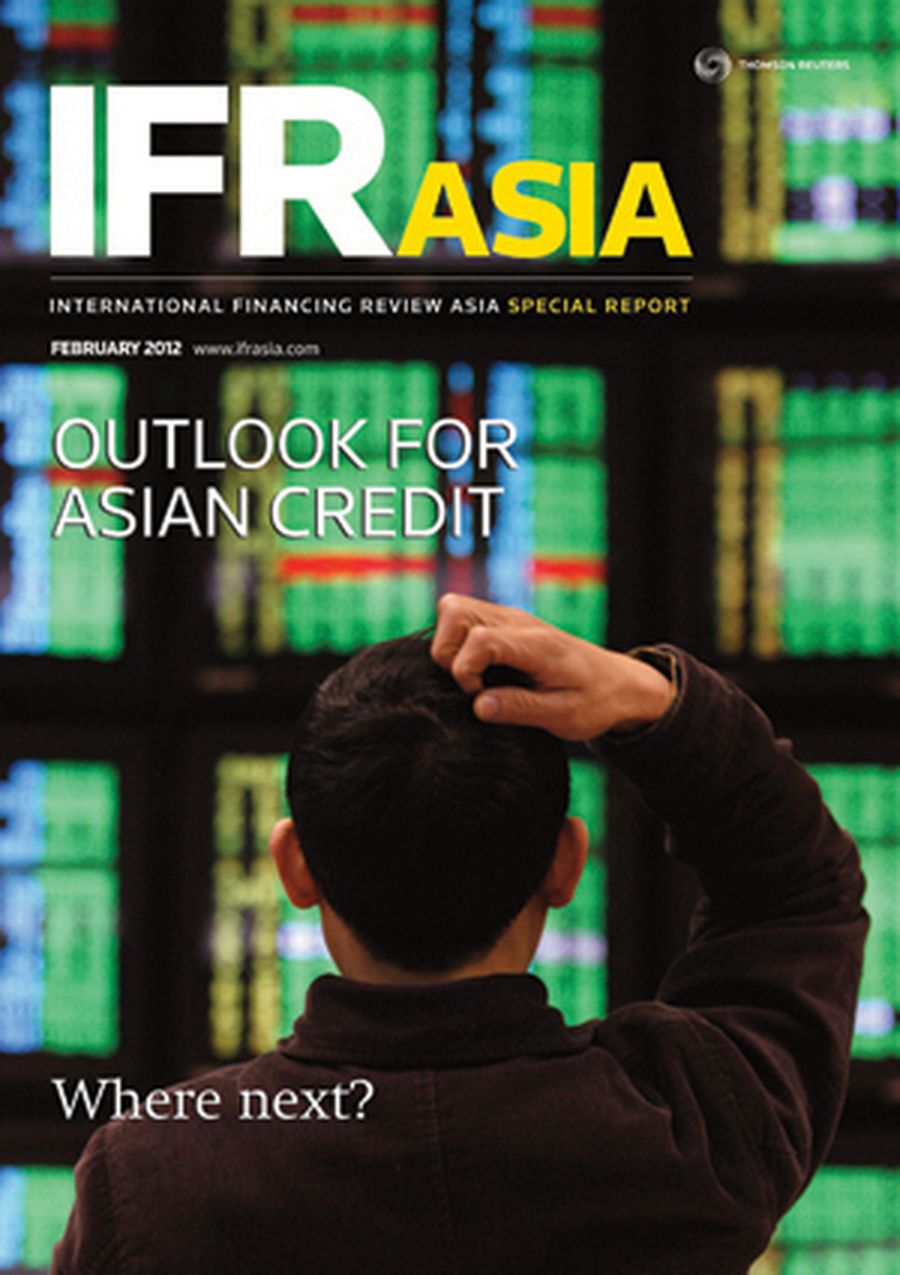
Source: Reuters/Nicky Loh
A man looks at stock market prices on computer monitors inside a securities company in Taiwan.
Not long ago, the slightest hint of volatility in the global markets would have left Asian issuers frozen out of the international bond markets. When the US sneezed, Asia caught a cold – to invoke an overused phrase.
A quick glance at the deals done in the first month of 2012, however, shows just how much things have changed. Far from struggling to find a global audience, Asian treasurers have been inundated with a flood of demand for new issues.
Asia’s first global bond sales of the year – from the Export-Import Bank of Korea and the Republic of the Philippines on January 4 – drew a combined US$19.3bn in orders, underlining the overwhelming international appeal of the region’s best-known issuers.
In a little over two weeks before the Lunar New Year holidays, Asian issuers raised over US$11bn in the international markets, or US$18bn including Australian borrowers. At a time when risk appetite is still suffering from the European debt crisis, that kind of pace bodes well for the rest of 2012.
It also illustrates that Asia, far from catching its usual cold, is becoming something of a safe haven for weary US and European investors. Newly investment-grade Indonesia is attracting more interest than ever, while Australia’s high-rated banks are proving a welcome distraction from the woes of Europe’s financial institutions.
Asian credit, however, is far from home and dry. Appetite for high-yield names – a key component of Asia’s emerging markets – remains thin and the threat of capital flight is ever present. International enthusiasm for Asian investments has yielded some real success stories, but that inflow brings with it greater risks. One third of Indonesia’s local government debt is in the hands of overseas investors. It is an amount that would take domestic funds years to replace should that capital ever be withdrawn.
With the European crisis still rumbling on, any look ahead to the rest of 2012 will inevitably be tinged with uncertainty. There are few signs that volatility is about to subside in the near term, and the events of 2008 are a constant warning that things can go from bad to worse at an alarming speed.
Yet, it is reassuring to note that Asian issuers have retained their access to the international debt capital markets, despite the turmoil elsewhere. With so much of the world’s fortunes riding on Asia’s ability to keep growing, it is in everyone’s best interest that the region’s funding markets remain in good health.
